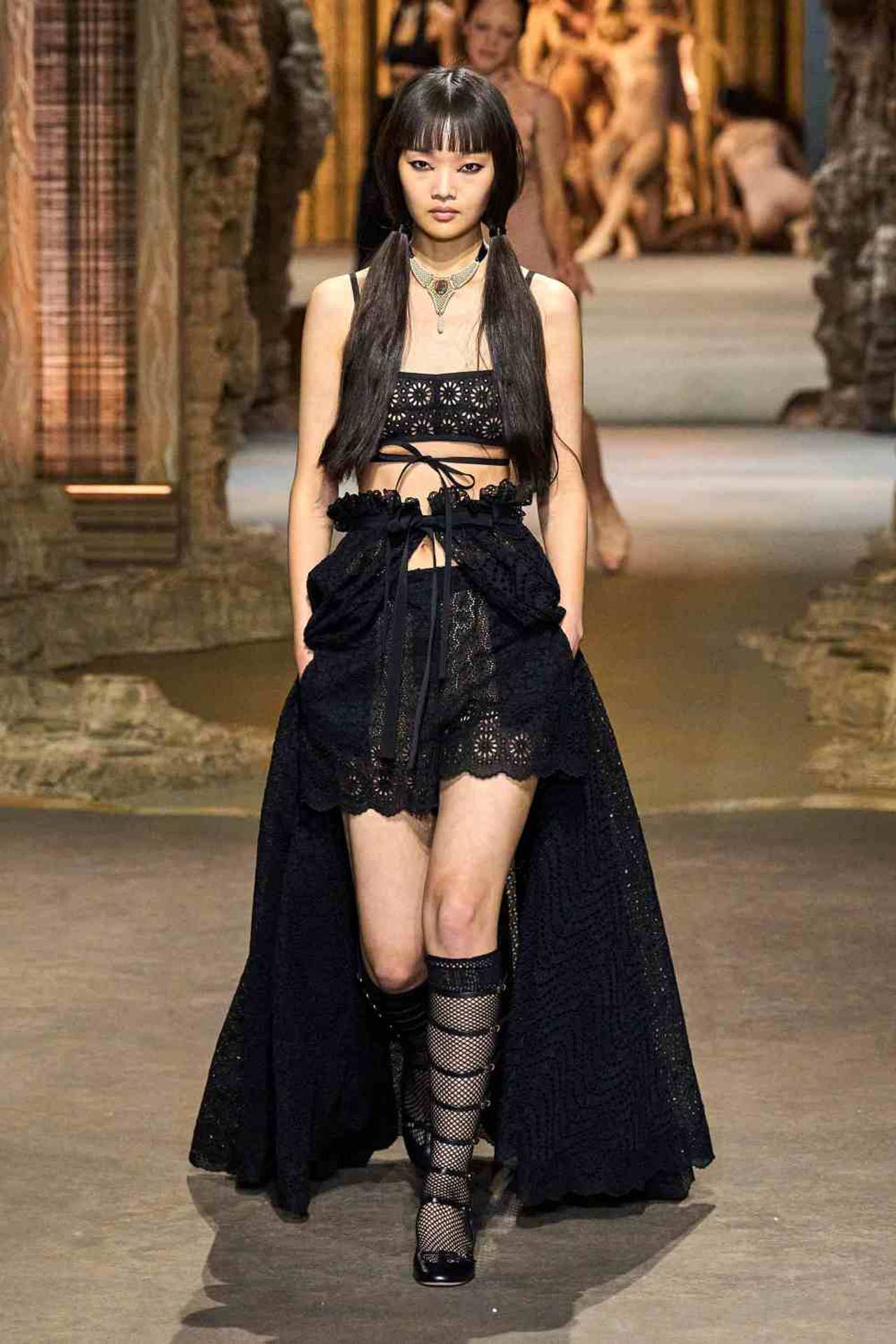MARIA GRAZIE CHIURI, DIOR’S FIRST FEMALE CREATIVE DIRECTOR AND SUBVERSION EXTRAORDINAIRE, PUTS WOMEN FIRST IN FASHION
BY RHIANNA JONES

Despite most legacy couture and luxury houses being founded for a female clientele, the designers themselves – from Vuitton and Givenchy to Saint Laurent and Dior – were largely men. All the references they drew from (film, art, architecture) were primarily male as well. While gender roles were once reflective of women being objects of the male gaze, fast forward to the present and they’re breaking glass ceilings left and right, including Maria Grazie Chiuri, appointed Dior’s first female creative director in 2016. And with this newfound power and platform she’s actively carving a path to bring other female voices and visions to the forefront.
While Chiuri’s appointment may be pioneering, she’s no stranger to making waves and headlines in the industry. Chiuri’s Roman upbringing, born to a seamstress and military father, instilled a foundation of functionality (rather than frivolity) in fashion. Growing up in 1970s Italy, in an era of social tumult and women’s, inspired her to pursue education at Instituto Europeo di Design rather than traditional marriage. She landed at Fendi in 1989 in the accessories department, where she created the iconic Baguette bag that’s now enjoying a renaissance today.

Unlike other flashier designers of the time, Chiuri lived humbly out of the spotlight, but was revered amongst her colleagues. After Fendi, she worked her way up at Valentino for 17 years, the latter half spent at the helm with longtime collaborator Pierpaolo Piccioli (who still leads Valentino). The dynamic duo revitalized the house into the scintillatingly feminine “Valentino Pink” tour-de-force it’s become today, launching the fan-favorite “Rockstud” bags and nurturing the brand into a billion-dollar business. In 2015 they received the CFDA’s coveted International Award, a fitting souvenir to mark their decades long collaboration before Chiuri was tapped to take over for Raf Simons at Dior.

With his architectural silhouettes and love of technical fabrics, Raf amassed a global legion of followers at Dior, leaving rather large crystal-encrusted shoes to fill, but Chiuri took full advantage of her highly anticipated debut. For her opening look she made the ultimate statement: the infamous “We Should All be Feminists” tee, quoting Nigerian writer Chimamanda Ngozi Adichie, paired with a sheer tulle maxi skirt and sparkling sneakers imbuing Dior’s signature refined elegance with an undercurrent of cultured intelligence.
The shirt that spawned a thousand copies and conversations signaled a new look at Dior, one less concerned with nipped waists and fantasy bodies, but ripe for the modern woman. Season after season Chiuri keeps churning out fashion gold (she brought the Saddle bag out of the archives, another classic enjoying its Y2K renaissance). She is consistently honoring and collaborating with women that inspire her. In her following Spring collection, she unleashed another slogan tee begging the question “Why Have There Been No Great Women Artists?,” with a copy of Linda Nochlin’s provocative essay in every seat, and for another she had models catwalking out of Judy Chicago’s “The Female Divine,” a womb-like canal challenging the phallicism of architecture.
But beyond making statements on $800 cotton tees, Chiuri has been interweaving her female-forward values into every seam of the collection. Her Spring 2023 was inspired by famed power-dresser Catherine de Medicis, who similar to Chiuri came from Italy to establish herself in the highly patriarchal Parisian beau monde. Chiuri insists on only working with female photographers for Dior campaigns – the truest defiance of the male gaze, and has challenged Dior’s parent company LVMH for pay equity. In Chiuri’s words, “If we are going to challenge the patriarchy, women need to speak more about sisterhood and community. Real feminism is about women supporting each other.”
Dior / Dior.com
